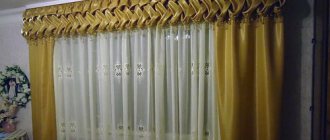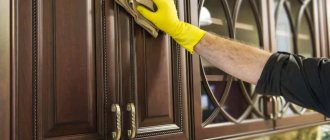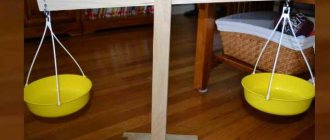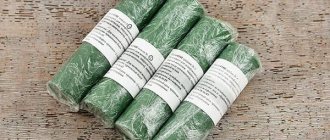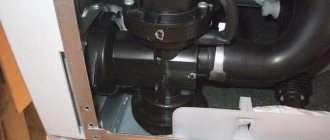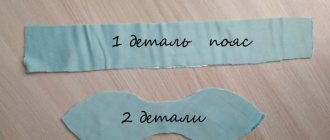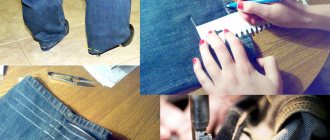The condition of the furniture deteriorates over time. Regardless of operating conditions, the finishing coating loses its strength, becomes covered with a network of small cracks, and becomes dull or cloudy.
Scratches and abrasions appear, which spoil the appearance of the furniture and make it unsuitable for use in the interior of residential or public premises. However, in most cases the condition of the surfaces can be restored, and sometimes it is possible to make the furniture more attractive than it was before.
What is polishing
Polishing is a process of finely treating a surface, giving it shine. As a rule, the varnish layer is polished, but the procedure can also be performed on the paint or the material itself. The processing technique is close to grinding, but the fineness of the abrasive in this case is an order of magnitude higher.
There are different degrees of surface gloss. There are glossy finishes that are highly shiny and reflective to surrounding objects. Furniture finished in this way looks elegant, bright, and glares when exposed to light.
Matte surfaces do not reflect light, their shine is very soft. As a rule, matte types of varnish are used for modern furniture, but ancient samples were coated with a special composition (classic shellac), or the wood was simply impregnated with oil, followed by processing with cloth swabs.
Expert opinion
Kokovin Dmitry Vasilievich
Furniture restorer
There are different polishing techniques. The basic method is to apply a special polishing paste to the prepared surface and process it using a polishing wheel made of foam rubber, felt, felt and other materials.
How to get rid of it?
You can deal with defects using wax, which removes them by polishing. Pencils for car restoration have a good effect. You can also purchase special compounds designed to combat scratches on furniture.
Wax
You can get rid of scratches using wax. Procedure:
- wash and degrease the surface to be treated;
- apply a small amount of wax to a flannel cloth;
- rub the scratched area in a circular motion;
- When the wax completely fills the recess, you need to remove its remains - use a paper napkin for this.
In addition to the creamy polish, you can use a hard wax pencil designed for caring for doors and laminate floors. To ensure that the product fills the entire surface of the scratch, it is melted in a water bath.
Wax masks defects well, but after several cleanings it will be washed off and the scratch will appear on the cabinet again. To prevent this from happening, it must be sealed. To do this, use a halo-free varnish or a laminate marker. You need to select products that match the tone of the kitchen unit.
Car pencil
To get rid of scratches on kitchen furniture, you can use a car pencil. It is chosen depending on the type of damage. So, a corrector pencil will help you cope with minor defects.
A wax pencil is more resistant to moisture and allows you to get rid of deep damage. Of course, upon closer inspection the scratch will be visible, but from afar it is not noticeable and almost invisible.
Pencil paint is the most effective tool. However, it is problematic to match it to the same tone as the kitchen, but if you manage to purchase a composition identical to the color of the set, then not even a trace of the defect will remain.
To achieve the desired result, use the pencil as follows:
- Clean the kitchen from dust and dirt.
- Degrease the area around the edges and inside the scratch.
- Shake the pencil.
- Remove the cap and insert the applicator. By pressing on the rod, it is filled.
- Guide the pencil along the damage, gently pressing on the rod. During processing it will fill and become invisible.
- Remove excess product with a dry cloth. You need to start removing them right away; if you miss the moment, the composition will harden into an unsightly lump.
- Leave the product to harden for 2 days.
When the paint adheres firmly to the surface, the kitchen is polished. Pencils have their pros and cons.
Main advantages:
- versatility - they can be used on any surface;
- safety for glossy finish;
- ease of use;
- great visual effect.
However, they also have disadvantages. So, pencil-paint is not cheap. The average price is 450 rubles. Although the manufacturer promises a water-repellent effect, after some time the scratch will appear on the kitchen surface again and the treatment will have to be repeated.
Special products for furniture sets
In addition to available products, there are special compositions on sale for removing scratches from kitchen surfaces. Top 3 best products:
Furniture pencil Novator
There are products on sale in different colors. The pencil can be used to remove minor defects, chips and cracks on both glossy and wooden surfaces. Price – 60 rubles.
Restoration marker Airchimedes
It is suitable for removing scuffs and scratches on a laminate kitchen. The pencil dries quickly, does not leave smudges, adheres well to smooth surfaces and does not fade in direct sunlight. Price 180 rubles.
Retouching for furniture Master City
The product is available in a bottle with a brush. There are different colors on sale. Scratches can be removed by painting them over. Retouching is used to remove surface defects, without indentations. Price – 150 rubles.
When choosing an anti-scratch product, you need to make sure that it is suitable for treating glossy surfaces.
What materials can be polished?
As a rule, furniture coating is a varnish layer of one composition or another. In Soviet times, the main type of coating was polyester varnish. It was applied in a thick layer (0.5-0.8 mm), ground and polished on special production lines.
Modern furniture has a varnish coating made on the basis of the same polyester. Or other materials. there are many of them, but the general properties are approximately the same.
The most common coatings are:
- polyester;
- polyurethane;
- nitrocellulose;
- impregnation with oil of natural or synthetic origin.
Almost all varieties can be polished. The softer the varnish, the easier it is to polish, but its abrasion resistance is much lower.
Paints and varnishes that are sold in retail chains are of little use for creating high-quality furniture coatings. They do not meet standards for hardness and load resistance. For restoring furniture coverings, they are suitable only in certain cases and require proper use.
Industrial polishes - are they worth buying?
Industrial polishes contain special substances that fill microcracks in the furniture surface, as a result of which the structure of the material becomes even and smooth - polished.
Today, store shelves are filled with a variety of products from different manufacturers. They, to one degree or another, make care easier, but how safe and effective they are is always up to the consumer to evaluate after purchase. This is a matter of personal choice.
Furniture wax is a good alternative
You can find furniture wax on the shelves of hardware stores. This substance has been used to coat furniture for centuries. And today it ranks first in wood processing and care.
What are the advantages of using wax:
- furniture can withstand long-term loads;
- wood does not lose its texture, retaining natural warmth;
- the velvety properties of the material are preserved;
- after coating, the color of the product becomes more expressive;
- the ability to choose any tone during restoration;
- The thick consistency fits well on the surface of the wood, filling all cracks and scratches.
- furniture wax should be applied to clean, open-pore furniture (so that there are no paint coatings);
- a labor-intensive process when the surface is varnished (needs to be thoroughly cleaned).
Wax furniture polish AMWAY
This is the option when you can trust the manufacturer, because more than one housewife has already noted the effectiveness of this brand’s products for various purposes.
An excellent Amway polish, which has established itself as an ideal assistant for the care of wooden and lacquered furniture.
- creamy structure - does not flow, does not drip;
- fresh lemon aroma - non-toxic;
- convenient aerosol can;
- easy to use.
Methods for polishing furniture at home
Despite its apparent complexity, polishing is not a high-tech process and is quite accessible to do it yourself. Its only drawback is that it is labor intensive; the work requires care, time and effort.
Felt
Felt
The main method of polishing a new coating is to apply a polishing compound and treat the surface with felt or felt material. To obtain a mirror shine, you have to use special devices - attachments for an electric drill or grinding machines, otherwise the procedure will take too long.
Polishing technology has been known to people for a very long time. It has been improved, supplemented, and improved over thousands of years. Today, at home, you can use different techniques, which are chosen depending on the initial condition and type of coating.
Classic polishing
Ancient polishing methods differ markedly from modern ones. In practice, this is a separate technology that is rarely used today. Simultaneous application and polishing of a varnish composition or polish is carried out. This is shellac tree resin dissolved in ethyl alcohol.
The polishing process is carried out using a swab. Take a piece of clean linen cloth the size of a handkerchief. A lump of cotton wool the size of a large plum is placed inside. A little polish is poured into it, wrapped in a cloth and the surface begins to be processed in a circular motion.
The composition impregnates the tampon and fabric and is applied in small quantities to the surface. It dries immediately on it, so you need to act quickly, without stopping. If the swab is stopped in one place, the polish will dissolve the already created layer and ruin the entire work.
Expert opinion
Kokovin Dmitry Vasilievich
Furniture restorer
Classic polishing is a complex procedure that requires experience and skill. In addition, it is very difficult to get natural shellac today, so this technique is rarely used. Basically, it is used by master restorers to restore antique furniture.
Traditional methods
Folk polishing methods are quite simple, but quite effective. As a rule, they involve treating the surface with soft materials using a fine abrasive, for example:
Dentifrice
Toothpaste
Chalk
Talc
To reduce heat due to friction, oil (sunflower, linseed or synthetic) is used. It is applied to the surface or to a polishing block, which eliminates the risk of overheating and damage to the varnish layer. To simplify the process, make a mixture of abrasive (chalk, tooth powder) and oil filler (linseed, sunflower oil).
For fittings, metal parts or hard components, only abrasive can be used, without filler. It is poured onto a felt or felt block and the surface is rubbed until shiny.
Polishing pastes or compounds
In furniture production, special compounds are used to polish the surface to a mirror finish. They are rarely found on the open market, as they are supplied in large packages. It is not advisable to purchase them for household use.
However, there are effective and high-quality pastes for polishing car coatings. They are sold in small containers (1 kg, 800 g, etc.), and to treat a small area you can buy a very small amount of material.
One such composition is 3M paste, which is available in several forms:
- No. 1. Used for rough (primary) processing of surfaces after grinding. Removes small marks and abrasive marks;
- No. 2. Brings the surface to a mirror state;
- No. 3. Brings the coating to its final state and gives the surface a durable protective layer.
In addition to the basic compositions, there are intermediate ones - numbers 1.5 and 2.5. These compositions simultaneously possess the properties of lower and higher materials.
There are other polishing compounds on the market. There are hard pastes (such as GOI) that are used for polishing hard surfaces. However, most materials are made in the form of thick pastes (the consistency of sour cream or toothpaste), which are more convenient to apply and work with. They all have approximately similar qualities and allow you to effectively and quickly bring the surface to ideal condition.
Compositions for varnished wood products
Such furniture polishes belong to a separate group. The fact is that if interior items have a varnish layer, they cannot be coated with universal compounds that dry out the surface. In this case, the polishing liquid is required to create additional protection - a durable film over the varnish layer. Then direct varnishing becomes unnecessary.
Industrial
The most famous furniture polishes:
- Pronto - the product removes stains from furniture well and also masks scratches on its surface;
- Chirton is a wax-based product that effectively removes dust and dirt from the surface of wood and improves its structure;
- Emsal - quickly copes with dust, as well as water and grease stains. Due to the presence of natural oils in the polish, it refreshes the color of wood, giving it a natural shine;
- Luxus – cleans the surface of wooden furniture, giving it a neat, well-groomed appearance;
- Mebelux - designed to care for wooden surfaces, extending their service life.
These and other types of polish can be purchased at a hardware store or market.
Mebelux
Pronto
Luxus
Emsal
Chirton
Folk remedies
In addition to industrial compositions, it is permissible to coat wooden furniture with folk remedies. They also carefully care for the surface, eliminating scratches and minor damage. They are considered the best of them.
Potato tubers
To polish wood, take 1 tuber, peel it and cut it in half. To do this, it is advisable to take a large potato. Then we pass it along the wood façade that needs polishing. After this, wipe the set dry with a rag. Furniture should not be cleaned with a damp cloth or sponge, as this will remove the shine and remove the polish. Lacquered interior items cannot be cleaned with soapy water, as it will damage the surface of the product.
Cutting the potatoes
Processing the coating
Wipe with a dry cloth
Burdock oil
To restore polished furniture, you need to apply oil to a cotton swab or soft cloth, and then gently wipe the wood. Upon completion of the work, wipe the treated surface with a flannel scrap.
Choosing burdock
Wipe the surface with the composition
Vegetable oil and flour
Polish wooden furniture pieces with a mixture of flour and oil. The products need to be mixed in equal proportions and then distributed over the surface of the furniture using a rag. This product polishes the surface of scratched furniture well, which after treatment acquires a well-groomed appearance and gloss.
Combining the ingredients
Wipe the surface with the composition
Table vinegar
If the set is very dirty, it can be treated with vinegar. It will add shine to glossy furniture and disguise damage. After using vinegar, as a rule, the room needs to be ventilated so that the unpleasant smell stops “haunting” the set.
Wipe down furniture with vinegar
Ventilate the room
Sauerkraut brine
The furniture is wiped with a rag soaked in brine. The stronger the brine, the better it polishes the surface. These are not all folk methods that restore the base of wooden furniture. But such recipes are considered the most effective, they last a long time, are safe and affordable.
Useful tips
Polishing is a largely creative process. However, it is better to act according to proven methods and not violate technology.
How do you polish?
ClassicFolk
It is recommended to follow some tips:
- During operation, do not apply too much force or put pressure on the machine. This may cause the coating to overheat;
- If marks or scratches are clearly visible, you should not start polishing. It is necessary to carefully prepare the surface. sometimes this is neglected, hoping that the flaws will disappear during processing. However, they will remain and will be clearly visible;
- Matte finishes do not polish. Sometimes they become covered with shiny areas, which are restored using scratch paper.
By following these simple tips, you can get high-quality coverage and avoid annoying mistakes.
Furniture polishing is a procedure that allows you to restore old products and correct errors made during operation or transportation. The polishing technology is simple, but high quality can only be achieved with skills and experience. Otherwise, the flaws in the coating will only be exacerbated. If you don’t have confidence in your abilities, it’s better to entrust the work to specialists.
How to Add Shine to Polished Furniture
It also happens that after cleaning or simply over time, polishing loses its shine. How, in this case, can you restore the shine of polished furniture without resorting to expensive and dangerous chemicals? There are several proven options.
Wax
The first and most popular option is wax. A piece of pure wax without impurities can not only restore the shine to the surface, but also get rid of minor scratches and damage. The main thing in this matter is not to get too carried away with rubbing, apply the wax in a thin layer, otherwise the surface will become matte and completely lose its shine.
Vinegar solution
The second option is also very simple - it is a mixture of vinegar and vegetable oil. Soak a soft, lint-free cloth with this mixture and rub the surface until shiny, then wipe with a dry cloth to remove any remaining product.
How to remove dirt from polished furniture
To wash dirt from home furniture, you can use a special chemical solution from the manufacturer or improvised materials. You can even wash the surface with tooth powder dissolved in ammonia.
It is also necessary to prepare means for treating the surface of the product.
Preparation of a special solution
To remove dirt from polished furniture, you can use a special solution and antistatic agent for clothing, hair shampoo and several glasses of water at room temperature.
Folk remedies are suitable for preventive cleaning.
The resulting mixture will get rid of stubborn stains, grease and dust.
Use of beer
Beer is an excellent way to remove ink stains, stubborn dirt, grease and paint marks. A dark, intoxicating drink can remove ink, and a light drink with added sugar can remove fat and the rest.
Photo: example of a polished table before and after.
When using beer as a cleaning agent, remember that furniture polishing does not tolerate icy liquids.
Olive oil or wine vinegar
If small scratches appear on the surface, it is recommended to use a mixture of olive oil and wine vinegar (or maybe some red wine).
The oil can be used on almost any surface, except those that are highly absorbent.
After mixing the solution, apply the mixture to the surface and rub it with an old toothbrush. After a few minutes, you need to wipe the cabinet or table with a flannel napkin.
Oil protects wood from moisture.
Burr oil
You can quickly remove dirt, greasy stains or white marks from varnished furniture with burdock and linseed oil. A mixture of pure gasoline, denatured alcohol and the indicated oils will be useful. It will help remove grease, stubborn dirt, scratches, paint marks, pen marks and a number of other troubles.
Polishing furniture improves its appearance and improves many functional characteristics.
In this case, the smell of the infusion will help remove denatured alcohol and a cloth napkin.
Step-by-step instructions for resurfacing
Let's consider the procedure for polishing furniture coverings:
Tools and materials
To complete the work you will need:
Scratch sandpaper Solvent Polishing paste Sanding block Polishing wheel (attachment for electric drill) Specialized polishing machine
Only the most necessary materials and equipment are listed. The surface condition in complex cases requires additional actions using different tools.
Preparation
Preparatory work consists of sealing small scratches, pores, applying preliminary varnish layers and other activities. A special feature of the procedure is the lack of a clear sequence of actions, since the condition of the surface and type of finish are always different.
However, some general work should be done in any case:
- clean the surface from dirt, dust, deposits;
- degrease it with a solvent (if the coating is unstable to its influence, this step should be skipped);
- treat the plane (or a separate area) with a zero, eliminating unevenness and abrasions;
- If there are risks, scratches or other defects, they must be repaired with transparent putty. As a rule, they use ordinary varnish, which is used to fill the recesses and dry until completely dry;
- After the varnish has dried, restore the flatness using sandpaper No. 00.
Expert opinion Dmitry Vasilievich Kokovin Furniture restorer Sometimes, before applying varnish, it is necessary to treat the surface with stain, restoring the uniformity of color.
Polishing
Polishing is best done using mechanical means. Only small areas are usually processed by hand, where the work can be done quickly and without much effort. For flat surfaces and large areas, an electric drill with an attachment or a polishing machine is required.
The procedure goes as follows:
- Apply a certain amount of polishing paste to the prepared surface and distribute it in an even layer;
- Using a machine, the coating is polished, achieving maximum cleanliness and quality of processing.
The cycle is repeated until a satisfactory result is achieved.
Stains from iron, hot and direct sunlight
White spots are left behind by cups of hot drinks. Very ugly marks in the shape of crescents and circles are a result of exposure to hot cans, glasses, bottles.
When heated, the polymer, which is any modern varnish, changes its density, therefore, the physical properties change, namely transparency. This happens throughout the entire finishing depth. Elimination - complete replacement in a restoration workshop by a professional restorer using special equipment.
Pre-grinding
Polishing furniture is a long process and it begins with sanding. First, all cracks and other defects are covered with wood putty of a suitable color. After it has completely dried (the period is indicated on the label), sanding begins.
A sander is best for polishing wood or veneer. Tape or disk is a matter of taste and preference; it also depends on the complexity of the furniture shape. You will also need a set of sandpaper from coarse (80) to very fine (1200) grit.
In extreme cases, an angle grinder with a special attachment (disc and Velcro) may be suitable. But when working with it, it is difficult to achieve a really good result - there is no required mobility of the sanding platform, so the result of such wood polishing will not be above average.
What you might need to varnish furniture
We start sanding with 80 grit. We use it carefully, removing only large irregularities. Then we repeat the treatment with sandpaper at 120, then at 180 and 240. During the work, we must periodically remove dust and inspect the surface to identify unevenness and other defects. sometimes they are better identified by touch.
Then take water and 320 grit sandpaper. Wet the surface to be sanded and the sandpaper. We sand everything again, but this time with water. At this stage, you should get a good result - everything should be smooth. If everything is satisfactory, we move on; if not, we polish it for some more time.
Sanding the varnish
The process is the same as during preparation, only we use sandpapers with a finer grain - starting from 400. Be sure to sand with water - moisten the surface and sandpaper. Having finished processing, we attach sandpaper with 600 grain, then with 1000 and 1200.
This stage is the last one before actual polishing. After this treatment, the surface should be absolutely flat, uniform, without defects.
How to repair chips?
A chip is a significant defect that is not as easy to fix as a scratch. If a piece of wood or chipboard falls off a tabletop, drawer, or leg, you will need to restore it manually. For this we use:
- Furniture putty. It is best to use nitroester or polyester based putty. It holds much stronger than other varieties. It can even restore surfaces subject to constant stress, such as countertops and drawers. The restoration is carried out in two stages. First, apply the main layer, and after it dries, another one is applied. Excesses and irregularities are sanded with sandpaper and polished with a rag 2-3 hours after applying the putty.
- Hard wax. Suitable for restoring large chips. It is selected according to the color of the furniture; if the desired color cannot be found, take several colors and mix them. Before application, the wax is melted with a soldering iron and then sculpted onto the chipped corner. Excess wax is cleaned off with a spatula, and after hardening it is sanded. To recreate the wood pattern, furniture can be tinted with a furniture marker or paints.
- Furniture edge. If the corner edge was damaged by a chip, then after restoring the corner, it also needs to be restored. The old edge is heated with an iron and carefully removed. A new melamine tape of a suitable color is glued on top, ironing it with a hot iron.
